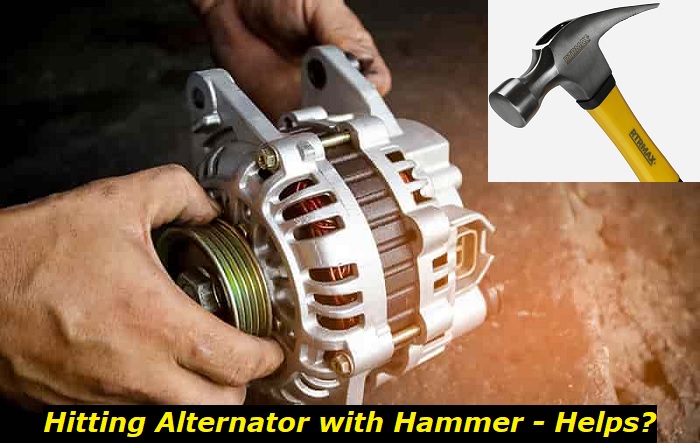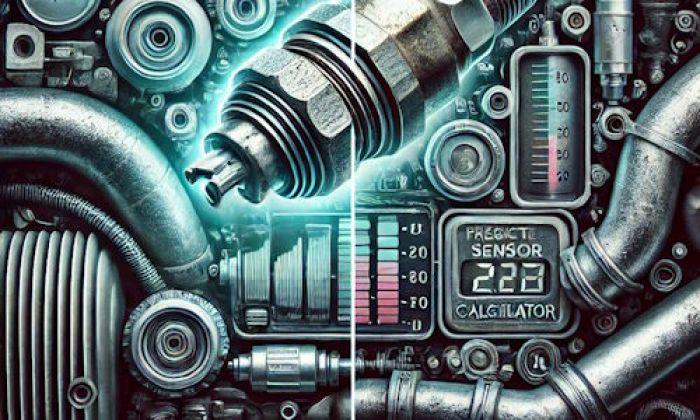There have been a lot of stories about mechanics banging the alternator with a hammer to get it working again. Sometimes it does work, but in more ways than one, they eventually fail. So, instead of banging your alternator with a hammer like the mighty Thor, consider checking your car for these particular problems, which may be the reasons why your alternator is seizing up.
Engine repair mistakes highlights
- Level of importance:extremely important
- When done:DIY repairs or diagnostics
- Cost of mistake:$250 - $4,000
- How to avoid:professional inspections, getting help from mechanics
- Consequences:broken engine, need for engine replacement
- DIY solutions:not many

Worn Alternator Brush
There are a few reasons why this "trick" may work temporarily, but it is not a long-term or permanent fix. The most likely reason is that the alternator's brushes are stuck. Hitting the alternator can sometimes jar them free, allowing the alternator to function properly for a while. However, the brushes will eventually stick again and the problem will return.
The alternator brushes are responsible for transferring electricity from the spinning rotor to the stationary stator. Over time, the brushes can wear down, causing them to stick. This can be caused by a build-up of debris on the brushes or simply due to age and wear.
If your alternator brushes are sticking, it will eventually lead to charging problems. The most common symptom is that the battery light on your dashboard will come on, even when the engine is running. This means that the alternator is not providing enough power to charge the battery.
Other symptoms can include dimming headlights and electrical issues like power windows or locks that stop working. If you notice any of these red flags, it's important to have your alternator checked as soon as possible.
If the alternator brushes are worn, they will need to be replaced. This is a relatively easy repair that can be done with basic tools and knowledge. However, if you are not comfortable doing the repair yourself, it's best to take the car to a mechanic.
Replacing the alternator brushes is a pretty simple process. First, you'll need to remove the alternator belt. Next, remove the bolts that hold the alternator in place and carefully remove them from the engine bay.
Once the alternator is removed, you'll be able to access the brushes. Simply remove the old brushes and install new ones in their place. Be sure to install them correctly so they make good contact with the rotor.
Once the new brushes are installed, you can reinstall the alternator and put the belt back on. Start the engine and check to make sure the battery light is no longer on. If it is, then you'll need to have the alternator checked by a mechanic.
If your alternator brushes are worn, it's important to replace them as soon as possible.
Carbon Build-Up
An alternator can seize up due to carbon build-up, which can happen when the vehicle has not been used for a long period of time. A temporary way to fix this problem is to knock on the alternator with a hammer or any hard object, which will break through the carbon and allow the alternator to work again. However, this can only serve as a momentary remedy, and if the contamination is not cleared, the problem will likely persist.
Carbon build-up in the alternator can trigger symptoms such as the alternator not charging the battery or the engine stalling. If you notice any of these symptoms, then it is possible that carbon build-up is the cause of the problem.
If the carbon build-up is not too severe, then you can try to clean the alternator with a brush or by using an air compressor. However, the best way to tackle this problem if the contamination has already resulted in corrosion or any form of damage is to replace the worn-out parts or the alternator itself.
Voltage Regulator Failure
Another possibility is that the alternator's voltage regulator is failing. Hitting the alternator can sometimes briefly jolt the regulator back to life, but it will eventually fail again. This is a common problem that can cause an alternator to seize up.
There are several ways to diagnose the cause of the problem. One way is to check the voltages at the various terminals on the alternator. If the voltage regulator is failing, the current will be erratic and you may risk further damage to the system of your car.
Another way to diagnose the problem is by checking the current draw of the alternator. If the voltage regulator is failing, the alternator will draw more current than it should. This can be checked by using a multimeter to measure the current draw of the alternator.
If you suspect that the voltage regulator is failing, it is important to replace it as soon as possible. Failure to do so can result in the alternator seizing up and not working properly.
There are a few different symptoms that can be indicative of a voltage regulator problem. One symptom is that the alternator will not charge the battery properly. Another symptom is that the headlights may flicker or dim when the engine is idling. Additionally, if the voltage regulator is failing, the car's electrical system may be more prone to problems such as short circuits.
If you are experiencing any of these symptoms, it is important to have the alternator checked by a qualified mechanic as soon as possible. Once the voltage regulator is replaced, the alternator should work properly again without resorting to your magical hammer.
Loose Parts
Sometimes, hitting the alternator in the right direction and with the correct amount of force can cause loose parts or connections to become aligned or get back to their contact points. Doing this might save you money in the meantime but the trouble will likely recur if the root of the problem is not fixed.
To diagnose the cause of the problem, start by checking for loose parts or connections. If you find any, try tightening or reconnecting them.
If that doesn't fix the problem, the next step is to check for damaged or worn-out parts. Any part that shows signs of wear or damage will need to be replaced. Check the quality of the wirings and terminals using a multimeter to accurately determine whether or not they are still functioning well.
Following these steps should help you fix the problem and get your alternator working again.
Stuck Mechanical Parts
If your alternator has seized up and is not working, it is likely due to a lubrication issue. You can try knocking it with a hammer to see if that will get it working again, but this is only a temporary fix and can risk further damage to the alternator. It is best to diagnose the cause of the problem and then take the appropriate steps to fix it.
There are several possible causes of an alternator seizing up. The most common in this situation include dirty or old oil, failed bearings, or seized pulley. Once you have diagnosed the cause of the problem, you can take the appropriate steps to fix it and get your alternator working again.
First, dirty or old oil can cause the moving parts inside the alternator to grind against each other, eventually causing them to seize up. To fix this problem, you will need to clean or replace the oil. You can easily avoid this problem by making sure that your oil reservoir is always topped up. The oil dipstick is easily your friend here when monitoring your oil level and quality.
Second, the bearings inside the alternator help keep the moving parts in place. If they fail, the moving parts can start to grind against each other, causing them to get stuck. If the bearings are not yet worn or damaged, spraying a small amount of lubricant like WD-40 may get them functioning again. Be careful not to put too much oil as it may have a negative effect on the other parts of the alternator. However, if they are already showing signs of wear, the only way around the issue would be to replace the bearings.
Third, the pulley is what drives the alternator. If it seizes up, the alternator will not be able to operate. To fix this problem, you will need to replace the pulley.
Conclusion
In the cases displayed here, the only real solution is to replace the damaged part of the alternator or any problematic component of your vehicle's charging system. Hitting the alternator with a hammer is only a temporary fix, and sometimes, it may even worsen the problem. The worst that could happen is that you may cause damage to the alternator or other parts of the charging system of your car, which can eventually result in electrical surges, fire, or accidents.
About the authors
The CarAraC research team is composed of seasoned auto mechanics and automotive industry professionals, including individuals with advanced degrees and certifications in their field. Our team members boast prestigious credentials, reflecting their extensive knowledge and skills. These qualifications include: IMI: Institute of the Motor Industry, ASE-Certified Master Automobile Technicians; Coventry University, Graduate of MA in Automotive Journalism; Politecnico di Torino, Italy, MS Automotive Engineering; Ss. Cyril and Methodius University in Skopje, Mechanical University in Skopje; TOC Automotive College; DHA Suffa University, Department of Mechanical Engineering






Add comment